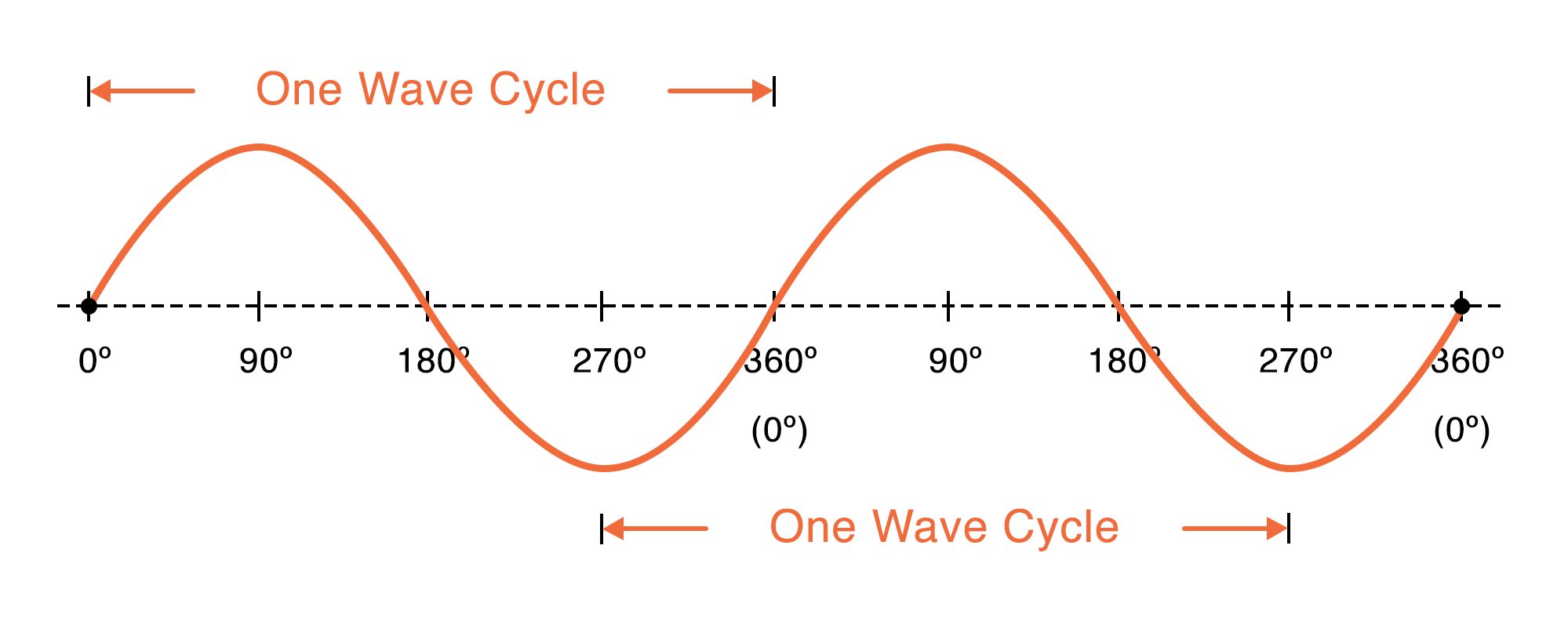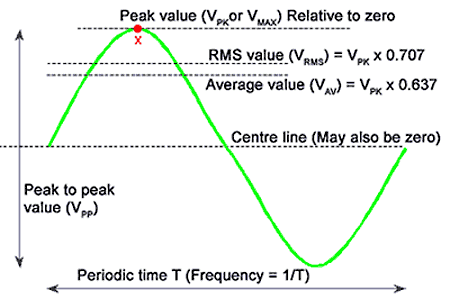Characteristics of a Sinusoidal Ac Waveform
Note that if the parallel circuits impedance is at its maximum at resonance then consequently the circuits admittance must be at its minimum and one of the characteristics of a parallel resonance circuit is that admittance is very low limiting the circuits current. In DC circuits the voltages and currents are constant and do not vary with time as there is no sinusoidal waveform function related to the supply.

Characteristics Of Sinusoidal Signals Sine Waves Video Tutorial
An AC-AC converter with approximately sinusoidal input currents and bidirectional power flow can be realized by coupling a pulse-width modulation PWM rectifier and a PWM inverter to the DC-link.

. An op-amp detector that has the ability to detect the change from positive to negative or negative to a positive level of a sinusoidal waveform is known as a zero crossing detectorMore specifically we can say that it detects the zero crossing of the applied ac signal. Unlike the series resonance circuit the resistor in a parallel resonance circuit has a damping effect on the circuits. In contrast the instantaneous values of the current voltage and resulted power in an AC circuit are continually changing by the supply.
Suppose we wished to take a. It is basically a voltage comparator whose output changes when the input signal crosses the. The stray-loss factor for copper conductors varies as the square of the load current and the square of the frequency and will therefore vary with the harmonic mix in the power supply.
The carrier wave usually has a much higher frequency than the modulating wave. The current waveform distortion that contributes to reduced power factor is caused by voltage waveform distortion and overheating in the neutral cables of three-phase systems. On the other hand different forms of modulating wave can be used according to the PWM technique.
Electrical Power in an AC Circuit. This pair of coils is connected to AC shifted in time by 90 in the case of a 2-phase motor. Typical SPWM technique uses the sinusoidal modulating waveform.
Generally standard TTL logic gates do not work too well as waveform generators due to their average input and output characteristics distortion of the output. A sine wave sinusoidal wave or just sinusoid is a mathematical curve defined in terms of the sine trigonometric function of which it is the graphIt is a type of continuous wave and also a smooth periodic functionIt occurs often in mathematics as well as in physics engineering signal processing and many other fields. 10 μV 025 of reading B grade Wide dynamic input range 100 μV rms to 3 V rms 85 V p-p full-scale input range Larger inputs with external scaling Wide bandwidth.
That is one coil corresponds to an N-pole the other to an S-pole until the phase of AC changes polarity. Although the percentage contribution to distortion by higher harmonics decreases as the harmonic frequency rises its heating effect even if the harmonic. This PAM signal when added with ramp signal shown in d is compared with the reference voltage of the comparator shown in figure e.
AC and DC differ in several ways from generation to transmission and distribution but for the sake of simplicity we will keep the comparison to their characteristics for this post. Delivers true rms or average rectified value of ac waveform Fast settling at all input levels Accuracy. The DC output of the battery is bucked or boosted according to the requirement and then converted into AC using a DC-AC inverter.
The major difference between the AC and DC which is also the cause of their different characteristics is the direction of flow of electric energy. Voltage and Current - The alternating current In an AC circuit is generated by a sinusoidal voltage source. 1nF to 1000uFThis would give a frequency range of between 1Hz to 1MHz high frequencies produce waveform distortion.
After modulation a PAM signal is generated that is shown in c. The triangular waveform is the most commonly used carrier in the PWM technique for modulating AC voltage. With a resistor value between.
The time period T of the waveform is 2π as evident from its waveform. The output voltage waveforms of ideal inverters should be sinusoidal. In Teslas time the source of the two phases of AC was a 2-phase alternator.
Determine the time period T of waveform. Here the first image ie a shows the waveform of the sinusoidal modulating signal and the second one b shows the pulsed carrier. RMS Value of sinusoidal AC current is.
Aluminum Conductor Characteristics. 100R to 1kΩ and a capacitor value of between. The DC-link quantity is then impressed by an energy storage element that is common to both stages which is a capacitor C for the voltage DC-link or.
For our example we will put T 2π and fx I m Sinωt in the formula. 1 MHz for 3 dB 300 mV 65 kHz for additional 1 error. The waveform shown by the oscilloscope is mostly DC with just a little bit of AC ripple voltage appearing as a ripple pattern on what would otherwise be a straight horizontal line.
The other pair of coils is oriented 90 in space to the first pair. The function of an inverter is to change a dc input voltage to a symmetric ac output voltage of desired magnitude and frequency. This is quite normal for the output of an AC-DC power supply.

Ac Waveform And Ac Circuit Theory Of Sinusoids

Ac Waveform And Ac Circuit Theory Of Sinusoids

Sinusoidal Waveforms Or Sine Wave In An Ac Circuit

0 Response to "Characteristics of a Sinusoidal Ac Waveform"
Post a Comment